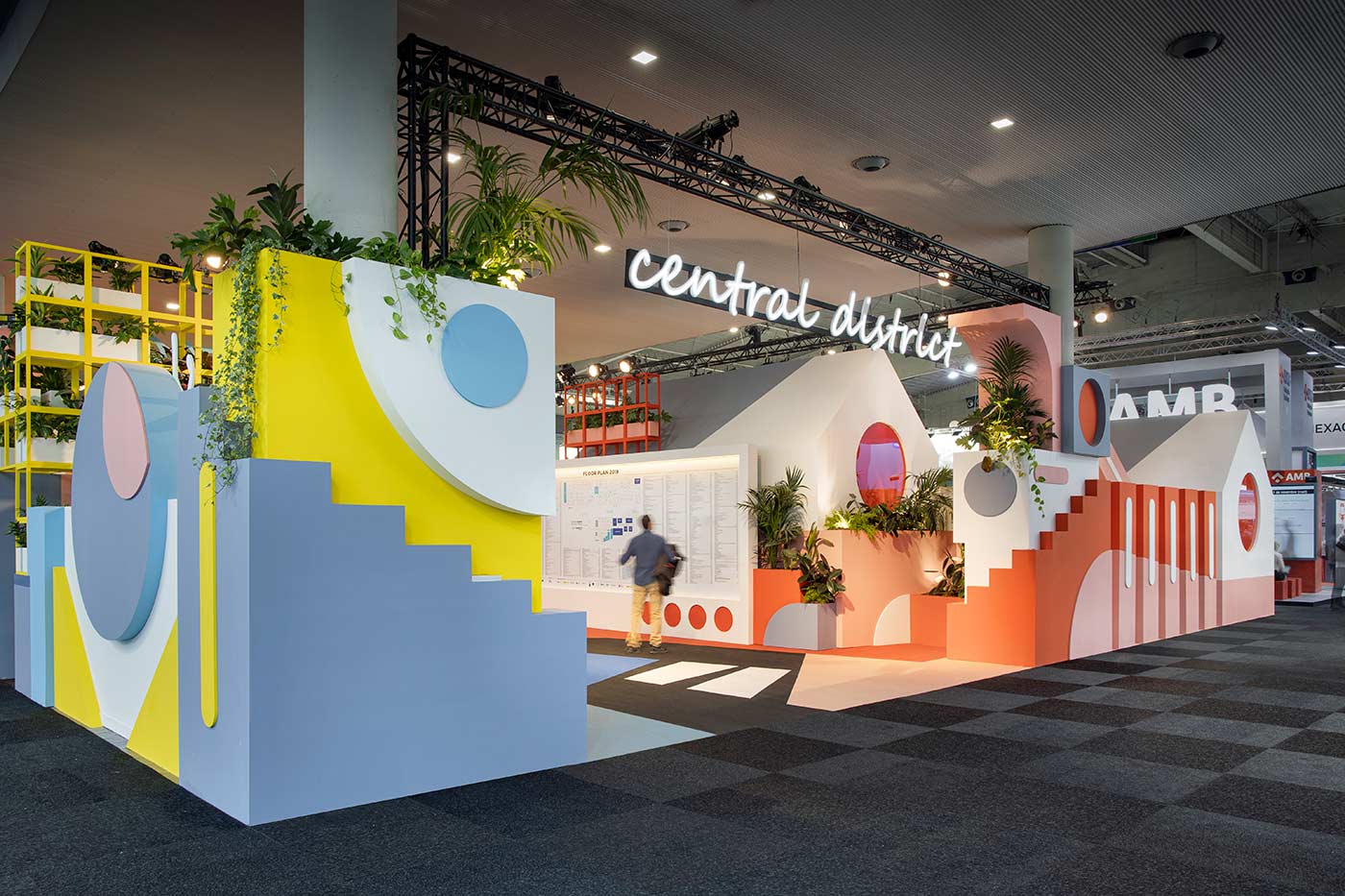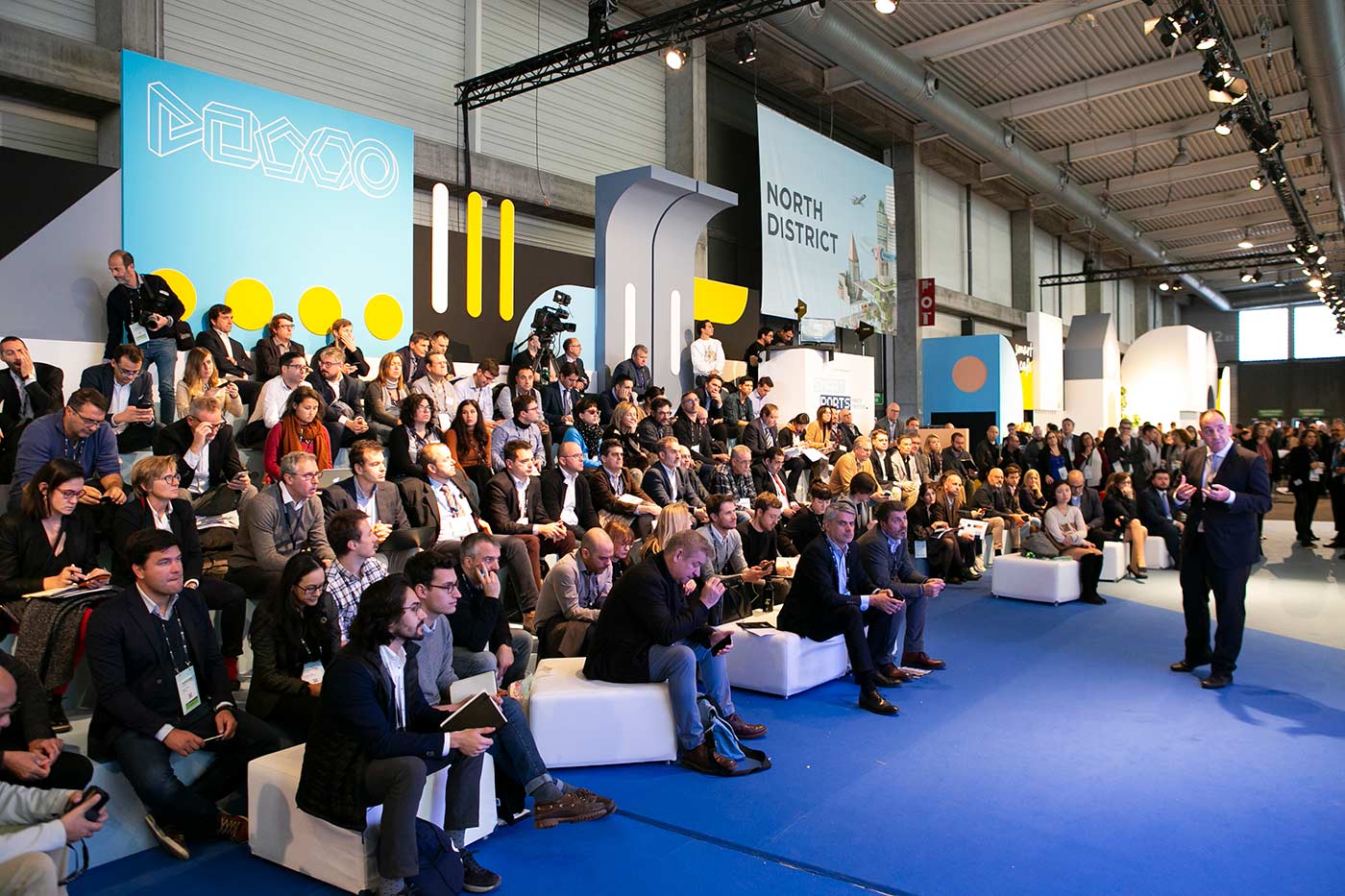What makes a city smart? Did Barcelona achieve sustainability, and how can society become more inclusive for aging populations?
Over the past three decades, Barcelona has risen to become one of the world’s top 30 smartest cities. This transformation was driven by 22 smart local programs targeting various dimensions of urban development: telecommunications networks, urban platforms, smart data, smart lighting, energy self-sufficiency, water management, mobility, urban renaturation, transformation, smart street furnishings, resilience, citizen participation, open government, mobile services (“Barcelona in Your Pocket”), waste management, regulation, innovation, health and social services, education, tourism, infrastructure and logistics, and leisure and culture.

Photo by Smart City Expo World Congress 2019 (SCEWC)
Economic, environmental & social sustainability
The programs mentioned above had a measurable positive impact on the local economy, including GDP growth and increased employment. But is a sustainable economy the only measure of a city’s success? Environmental and social sustainability are equally important, and Barcelona serves as a positive example in both areas.
In 2016, Barcelona introduced the Superblocks
initiative, marking a significant step in its pro-environmental efforts. Building on this, the city became a low-emission zone in January 2020, restricting 50,000 of the most polluting vehicles from its streets. To support this transition, vehicle owners were offered three years of free access to the T-Verde travel card if they agreed to scrap their vehicles and refrain from purchasing a replacement during this period.
Social sustainability, though broad and multifaceted, is often assessed in smart cities through the lens of “human capital”—the development and attraction of talent. Barcelona demonstrates strength in this area, with a total student population of approximately 188,000.
The smartest cities: A closer look
Several factors contribute to determining what makes a city the smartest: implementing innovative technology, using energy and resources efficiently, establishing affordable and efficient transportation systems, enabling high citizen mobility, promoting inclusive and sustainable urbanization, fostering social cohesion, ensuring effective governance and urban planning, improving quality of life, and addressing key urban challenges.
Smart Dubai
London was named the smartest city in the world for 2019, competing against 174 cities from 80 countries. It ranked first, followed by (in order) New York, Amsterdam, Paris, Reykjavik, Tokyo, Singapore, Copenhagen, Berlin, and Vienna, completing the top ten. Europe dominated the rankings with 28 cities among the top 50, excelling in areas like social cohesion, transportation, and public management. North America, the second-best ranked continent, stood out for economic performance and human capital.
When it comes to energy, all the listed cities have room for significant improvement, and big data can play a key role in optimizing energy consumption. According to Eurostat, gross electricity generation from renewable sources (EU-28) doubled between 2008 and 2017, with wind power seeing remarkable growth. However, there is still progress to be made with other renewable sources such as geothermal energy (which uses the Earth’s internal heat), solar power, and hydropower, which has stagnated.
It’s important to note that no energy source is entirely “green.” Hydropower dams, for example, disrupt river ecosystems, but they produce energy with the lowest carbon footprint. Solar power is the most accessible renewable resource, though manufacturing solar panels can involve toxic chemicals. Despite these challenges, the environmental impact of renewable energy sources remains far lower than that of burning fossil fuels.
Gross electricity generation from renewable sources, EU-28, 1990-2017
SCEWC
During my recent visit to the Smart City Expo World Congress 2019 in Barcelona, I came across an intriguing product developed in collaboration with Milestone and Canon: a crowd people counter. Designed for Milestone XProject, this solution is intended for applications in event management, public safety, and city planning. It provides precise statistical insights by analyzing the number of people in specific areas or public spaces.
Canon Product Specialist Mr. Shun Takagi highlighted the product’s key advantages, including its wide coverage area, fast and accurate crowd counting, and reduced equipment requirements. Initial tests showed that it outperformed competing crowd-counting methods such as top-down sensors, background difference detection software, infrared beams, and wi-fi-based counting systems.
This technology could offer an innovative solution for managing crowd density during Barcelona’s many festivals, such as Sónar, Primavera Sound, or La Mercè, when the city center becomes overwhelmed by tourists.

Photo by Smart City Expo World Congress 2019 (SCEWC 2019)
Real time data potential in IoT
Using real-time IoT data can bring new, high-quality solutions in some of the following fields:
- Energy – Efficient energy distribution
- Garbage – Efficient trash collection and recycling
- Traffic lights – Adjusting timing based on real-time data collected from sensors
- Connected cars – Finding nearby parking and EV charging stations
- Accessibility – Customized inclusive solutions for people with visual, hearing, cognitive, motor function, and spatial orientation limitations
AI & Autonomous Driving
Emerging needs: Smart aging
From a technical perspective, a smart city can be defined as an ICT framework designed for the development, deployment, and promotion of sustainable urbanization practices. It consists of an intelligent network of connected devices and machines that transmit data using wireless technology to address the challenges of growing urbanization. Smart cities rely on cellular and Low Power Wide Area Network (LPWAN) wireless technologies, as well as IoT. The primary goal of every smart city is to develop efficient, compact, and functional infrastructure that enhances the quality of life for its residents.
There are already plenty of smart innovations available, such as experimental autonomous vehicles, smart microwaves, connected football that measure speed and distance for professional players, fitness trackers and wearables, smart body composition scales for tracking fitness activities and their influence to body fat level or even body balance and bone mass.
Big data is changing the healthcare industry
Still, User Experience Design (UXD) has a lot to prove in the fields of AI and IoT. Can creative thinking harness technology to solve real problems for humanity? There is significant room for innovation in emerging fields. According to the World Health Organization (WHO), the majority of the world’s population can expect to live into their sixties and beyond. WHO also states that “the number of people aged 60 years or older will rise from 900 million to 2 billion between 2015 and 2050, moving from 12% to 22% of the total global population.” This means people will be able to contribute to their communities for much longer.
But is society ready to become more inclusive for aging individuals? Marginalization is a major issue, and we must learn to embrace our older population. Full automation of simple, repetitive tasks can be a good starting point, allowing older people to focus more on continuous learning, quality social interactions, and preventive healthcare. This shift could be especially beneficial for countries facing aging populations. Europe (Monaco, Germany, Ukraine, Serbia, Croatia, Albania, Portugal, Greece, Spain, etc.), Japan, and Canada are dealing with high mortality rates among native citizens and/or potential population collapse in the future. However, developed economies like Canada and Germany rely on migration to offset natural population decline. Southern Europe, however, struggles with a negative net migration rate, and Spain is leading Europe in rapid population outflow. Younger people are leaving for more developed economies, often leaving their older relatives behind. So, how can technology help?
Statista: Net migration in selected European countries in 2018
What emerging problems in your country could be addressed or alleviated with the help of AI and IoT?
